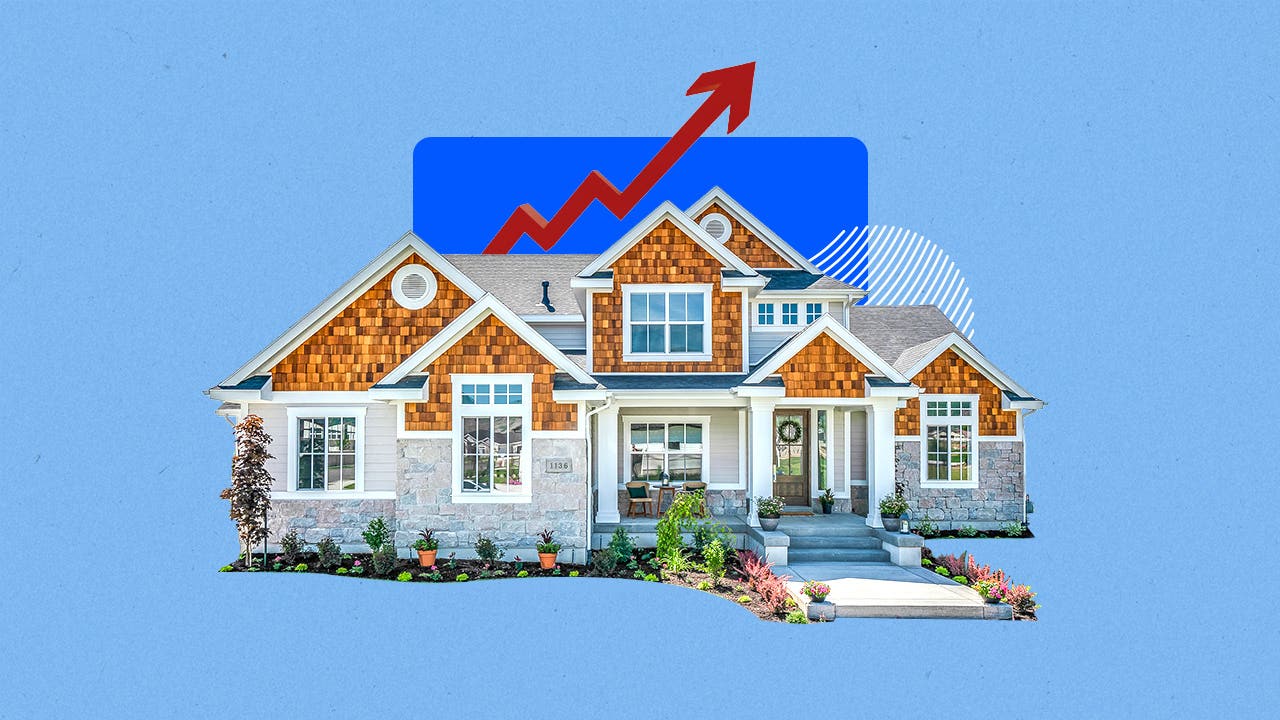Forecasting mortgage rates this month is March madness

The Bankrate promise
At Bankrate we strive to help you make smarter financial decisions. While we adhere to strict , this post may contain references to products from our partners. Here's an explanation for .
Even in the calmest of economic times, mortgage rates are tough to forecast. In the uncertain economy of the post-pandemic era, though, mortgage markets have been especially unpredictable.
In late 2022, as rates surged past 7 percent, credible observers said 8 percent could be next. Luckily for homebuyers and sellers, that move turned out to be a head fake. In early 2023, rates reversed course – they steadily fell, spawning new predictions of sub-6 percent rates in the near future.
That pattern proved to be another misdirection – rates did a 180 again in February, rising for two weeks in a row, according to Bankrate’s national survey of lenders.
The lack of a clear trend reveals that the investors who drive mortgage rates just aren’t sure what’s going to happen next. Perhaps the U.S. economy is in for a severe recession. Or maybe just a mild downturn. Or maybe even no slowdown at all.
“Volatility in financial markets is just a symptom of a tremendous amount of uncertainty,” says Mike Fratantoni, chief economist at the Mortgage Bankers Association (MBA).
Setting the pace: inflation and the Fed’s reaction
With spring — the traditional start of homebuying season — just around the corner, mortgage experts say rates will be determined in large part by the path of inflation, and by the Federal Reserve’s response to the ongoing rise in prices.
The Federal Open Markets Committee’s next meeting is scheduled to wrap up March 22. The Fed has signaled it plans another interest rate increase. How much depends on a couple of other crucial economic indicators, including the February jobs report to be released March 2 and the February Consumer Price Index (CPI) report on March 14.
The U.S. central bank has been fighting inflation for a year now. The pandemic spurred trillions of dollars in stimulus spending and disrupted supply chains. As a result, inflation soared in 2021 and 2022, peaking at an annual pace of 9.1 percent last year. That figure had slowed to 6.4 percent as of January 2023 – indicating that the Fed’s program of aggressive rate hikes is working, but also that the job isn’t done.
“The Fed wants these numbers to get back to 2 percent,” Fratantoni says.
Inflation won’t be tamed until 2024, he predicts. Still, Fratantoni expects the Fed to increase rates by a modest quarter-point this month.
‘The economy continues to outperform’
Freddie Mac chief economist Sam Khater likewise expects a quarter-point increase from the Fed this month. He sees uncertainty not in the size of the next increase but in how long rates stay high. The central bank could feel compelled to keep rates at elevated levels for a while, just to make sure inflation truly has been squeezed out of an economy that has proven resilient to rate hikes.
“The economy continues to outperform,” Khater says.
One challenge for the central bank is that its ability to control inflation has waned as the U.S. economy has shifted away from manufacturing. “It’s more of a service economy, and rate increases don’t filter through as quickly as they used to,” Khater says.
Greg McBride, Bankrate’s chief financial analyst, says a quarter-point hike is probable but not assured.
“Another quarter-point rate hike is likely in March, though another blowout jobs report or evidence of inflation re-acceleration would prompt the Fed to raise rates by one-half percentage point,” he says. “Under the quarter-point scenario, mortgage rates won’t respond to the rate hike itself but rather to the Fed’s assessment of how high rates will go. With inflation elevated and the end point of Fed rate hikes still in question, the risk is to the upside on mortgage rates.”
Nadia Evangelou, senior economist and director of real estate research at the National Association of Realtors (NAR), predicts the strong economy will force the central bank into a sharp increase.
“The Fed will likely raise interest rates by 50 basis points this month,” she says. “However, when it comes to the rate hike itself, the impact on mortgage rates will be minimal. Mortgage rates are currently moving upwards due to strong economic data and inflation running above expectations. These factors had an impact on the market’s expectations for future Fed rate hikes.”
The NAR expects 30-year mortgage rates to remain in the 6.7 percent range through March – but then fall to 5.6 percent by the end of 2023.
Pay attention to the mortgage ‘spread’
While the Fed is an important influence in the mortgage market, it doesn’t directly control mortgage rates. Rather, they mainly move with 10-year Treasury yields. But that relationship has turned unpredictable over the past year.
Runaway inflation was the main factor pushing mortgage rates up in 2022. There’s another culprit, too: the gap between 30-year mortgage rates and 10-year Treasury yields.
This interval, known to mortgage insiders as “the spread,” typically runs between 1.5 and 2 percentage points. If the 10-year yield stands at 4 percent, for example, the 30-year rate typically ranges between 5.5 and 6 percent.
Back on Jan. 19, 2022, for instance, the average rate on a 30-year mortgage was 3.75 percent, according to Bankrate’s survey. The 10-year Treasury, meanwhile, was yielding 1.83 percent. In other words, spreads were perfectly normal.
But later in 2022, spreads widened to rarely seen levels. By Nov. 9, the average 30-year rate in Bankrate’s survey was 7.08 percent, but the 10-year yield was just 4.12 percent. The gap had widened to nearly 3 percentage points — or, in finance jargon, 300 basis points.
The unusually high spreads reflect a combination of uncertainty about the U.S. economy and the Fed’s decision to stop aggressively buying mortgage-backed securities (a policy it had pursued throughout the pandemic).
A return to normal spreads would allow mortgage rates to fall. As of February 2023, they remained high, in the range of 270 to 280 basis points. But if spreads just calm to the high end of the normal range – 200 basis points – that would cut mortgage rates by about three quarters of a percentage point.
“We think a lot of benefit to the mortgage market is going to come from spreads normalizing,” the MBA’s Fratantoni says. “We think we’ll be closer to 5.2 percent or 5.3 percent [rates] by the end of 2023.”
Related Articles



